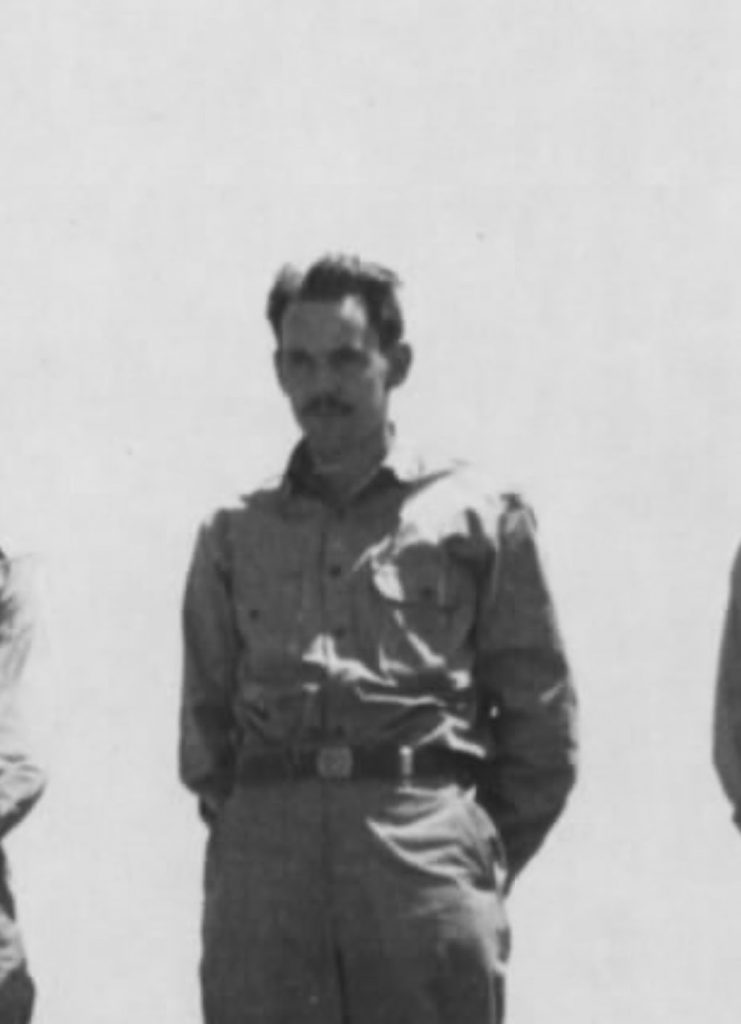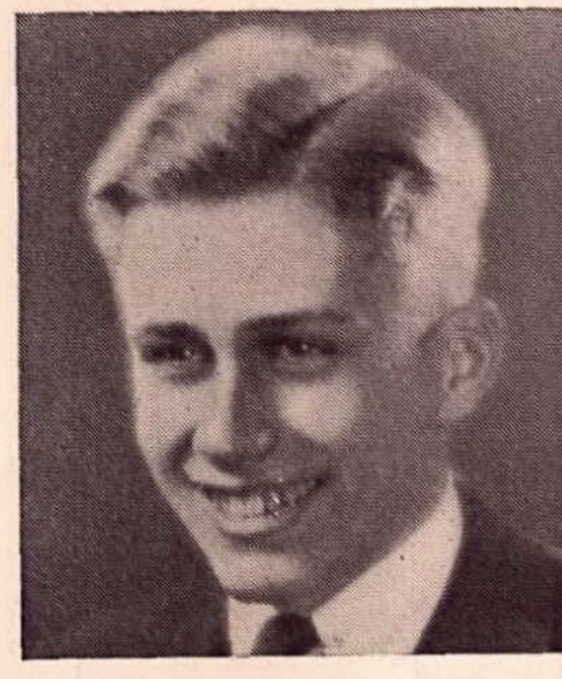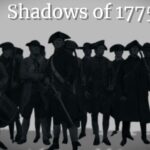Reading’s Boys #1: June-July 1943 by Autumn Hendrickson
Frederick John Estes Jr. (June-July 1943)

On October 16, 1940, a boy standing 5 feet, 10 inches tall walked into the Lafayette building in Wakefield and filled out his draft card. He lived on 118 Bancroft Avenue in Reading, Massachusetts with his mother, father, and sister. If you look at his draft card today, it says in red capital letters at the very top, “DECEASED.” But that is a story for another time. For now, he still has time.
Frederick was drafted into the United States Army Air Corps on February 17, 1941, and at some point, after Frederick finished his training, he was commissioned as an officer and joined the 380th Bomb Group, 528th Bomb Squadron as a navigator. The 380th Bomb Group, which was activated on November 3, 1942, at Davis-Monthan Field, Tucson, Arizona, went overseas to Australia in April of 1943, becoming the second B-24 unit in the Fifth Air Force to leave domestic soil. Shortly after reaching Australia and being put under control of the Royal Australian Air Force (RAAF), the unit was moved to RAAF Base Darwin. The threat of a Japanese invasion along the northern coast of Australia was very much present in the minds of the men and women in the surrounding areas, as well as the minds of the American and Australian service members.
Frederick and his peers were currently losing the war in the Pacific at an ever-hastening pace. The tide needed to turn, and almost as soon as the 380th set up shop at Base Darwin, they began combat operations. The 380th Bomb Group was the only heavy bomber unit available to cover the Dutch West Indies, some 1,000,000 square miles from July 1943 until late in 1944. Almost as soon as the unit could be moved, they were once again uprooted and sent to Fenton Field in Australia where they would call home until late 1944.
On June 11, 1943, Frederick would fly his first combat mission aboard the B-24 nicknamed “Little Eve,” alongside 14 other bombers from the 380th Bomb Group. The target was the Japanese airfield at Koepang on the island of Timor: the most forward aerial Japanese base in the south Pacific. Before the bombers even reached their target, they had lost a plane to an enemy fighter. This would become a norm for the group, seeing as they didn’t have any friendly fighter cover, making it easy for Japanese fighters to intercept them as they approached a target. The anti-aircraft fire from down below was intense but thankfully, Frederick and the rest of his crew would make it back to base. Another combat mission would be ordered a few days later on June 15 that Frederick would also participate in, though it was relatively uneventful.
The next big mission for Frederick and the 380th Bomb Group came on June 23: a 1,000-mile combat flight to a port in Massakar, Celebes. This time, Frederick climbed into a B-24 named “Juarez Whistle.” When the group reached its target, however, large bursts of flak began popping through the formation. But the bombs hit their targets and, somehow, no planes were lost. It was when the bombers returned to their base that disaster struck: upon landing, a bomber of the 319th Bomb Group blew a tire and ended up stopping halfway down the runway. Lieutenant Dexter Baker of Frederick’s 528th Bomb Squadron was short on fuel as he came in and just barely managed to clear the top of the disabled 319th bomber as he landed. Other planes began circling the runway, noticing that there was some type of problem on the ground down below. Hastily, a searchlight was set up to highlight the disabled plane in the middle of the runway so that the pilots still in the sky could see the issue. This did not seem to help much, though. Planes began making frantic and panicky passes at the runway, trying to clear the obstacle. Frederick, as navigator, probably would have been frantically trying to help his pilot, a man by the last name of Smith, figure out how he could safely get them into land. The situation seemed perfect for a disaster but luckily, through some feat of fate, our Frederick managed to get safely to the ground that night along with the rest of the bombers he had flown with.
It was a little before noon on June 30, 1943, when something happened to the young men on Fenton Field that they would likely never forget. The 528th Bomb Squadron was going into the mess hall for lunch when the alert horn started sounding. Some of the men chuckled, thinking it was a joke until one of the operations officers came screaming into the mess hall, “I’m not kidding! They’re only five minutes from here!” The smiles faded and the laughing stopped. I can’t imagine what Frederick must have been thinking. He was probably terrified. All the men began rushing for cover, but there was a problem. There was no cover. Moments later, 28 Japanese bombers appeared on the horizon, crawling toward Fenton Field. Three B-24 bombers were destroyed, many more damaged, but somehow, someway, no one was hurt. That evening, all across the airfield, men were digging as though their lives depended upon it. By morning, the field contained a vast network of trenches and foxholes in which to take cover.
It happened again. On July 6, 27 Japanese bombers and 28 Japanese fighters appeared on that same horizon. Three more B-24s were destroyed along with an Australian C-47, and the gasoline dump was set on fire. Every single man on Fenton Field turned out to help fight the fire. Somehow, someway, no one was hurt. As the Japanese planes passed overhead, I wonder if Frederick watched with his peers as the Australian Spitfires chased them down, and cheered. That was one thing that those Fenton Field boys had in common with their European airmen: a love for the sound of a Spitfire as it soared overhead.
By the end of July 1943, Frederick John Estes Jr. of 118 Bancroft Avenue, Reading, Massachusetts had flown nine combat missions.
Fred Melvin Day (June-July 1943)
On July 14, 1942, a man with brown hair, blue eyes, and what his physical examiner described as “ruddy” skin reported to Boston, Massachusetts to be drafted. I do not know if Fred Melvin Day was commissioned as an officer in the Army shortly after being drafted or if his promotion to 2nd Lieutenant was a battlefield commission. At some point after his training was finished, though, Fred was assigned to the 37th Infantry Division, 148th Infantry Regiment.
Though Fred and his peers in the 37th Division had probably seen some combat before the summer of 1943, it is unlikely that any of those experiences could compare to what Fred would see in New Georgia in the Pacific. As Independence Day, July 4, 1943, began turning into July 5, 1943, I wonder what Fred was thinking about as he stood on the deck of whatever transport ship brought him to this new hell, and looked up at the sky. How oddly relevant that day must have felt to some of those young men, and how much of a joke it must have seemed to others. If there was any time to think, though, it didn’t last long. That night, the third battalions of the 145th and 148th Infantry Regiments were loaded onto landing craft attached to the 1st Marine Raider Battalion and sent into a part of New Georgia called Rice Anchorage. Whether Fred was there or not, I do not know.
As the smaller landing craft moved toward the beach, one of the destroyers that had been tasked with protecting the vulnerable American troops was torpedoed and sunk. That ship was the USS Strong, and 46 of her 329 crew were killed that night. The torpedo itself had come from a Japanese ship nearly 11 nautical miles away, and it is believed that the torpedo that sank USS Strong was the longest-range successful torpedo attack in history. I can almost picture those young American boys turning to look back at the ships they had just left behind and shaking their heads at their luck.
The small battle that would take place when these young men landed came to be known as the Battle of Enogai. The soldiers that would land on Rice Anchorage would only be carrying three days worth of rations and would have no artillery support whatsoever. Allied intelligence suspected that there were roughly 500 Japanese troops in the area. In reality, there were 1,100 troops waiting for them.
There was a problem, though. The 148th Infantry Regiment had made a grave mistake. They had landed in the wrong place, their mistake probably caused by the lack of light and anxiety produced from watching one of their ships nearby fall beneath the waves. It would take them a few days before they were able to link back up with the other troops. The primary landing force didn’t meet much resistance, however. The most trouble they ran into was sporadic Japanese artillery fire. Once a beachhead had been established, the thrust toward their objective began: Bairoko Harbor. For some reason, instead of taking the straight path from their current location to their objective, they decided to travel to their destination using three parallel trails.
Between the landings on the morning of July 5 and July 7, only a few very small skirmishes with enemy forces occurred. It was on July 8, while the 148th Infantry Regiment was holding positions along the trail from Munda’s airfield to Triri that the 148th would experience first-hand one of the staples of the Pacific War: being attacked by an enemy that seemed to appear out of thin air, right behind you. The trail was reported as being clear so the Marines working with the regiment began pushing up to mount an assault on a small Japanese outpost. The Japanese took this opportunity to pounce upon the unsuspecting 148th Regiment troops holding the trail. Only one American was killed in the fighting, but this was likely because the bulk of the Japanese force that chose to attack that day was further up the line. Once the objective of Bairoko Harbor had been secured, though, the main landing force began their operations.
Back on Zanana Beach, the primary landing area where Fred would have landed if he were not a member of the third battalion, 148th Infantry Regiment, things weren’t going well. The 43rd Infantry Division had been tasked with assisting in the capture of Munda Point, but they were tired, hungry, lacking experience, and scared. On July 23, 1943, the 37th and 25th Infantry Divisions were sent in to reinforce the struggling 43rd Division. By the time that the 37th Infantry Division had arrived on the scene, the Japanese had managed to push all the way back into the 43rd’s medical station and “kitchens.” On July 25, Fred and his peers launched an attack toward Bibilo Hill with the support of the ships off-shore, artillery, and air cover. The armor that was supposed to be supporting the infantry was unable to get up the steep embankments in the area, though, and the attack stalled.
On July 28, as the 148th Infantry Regiment continued to hold their line as best as they could, the unit to their north moved up too far. Suddenly, there was a force of nearly 200 Japanese soldiers threatening to surround the now cut-off 148th Infantry Regiment. As the Japanese began pushing into the 148th’s lines, I wonder if Fred was scared. I can almost picture him and his comrades staring into each other’s eyes in shock. There was nowhere to run. Nowhere to hide. No way to escape. On July 31, 1943, Fred probably looked on with a mix of shock and fear, as a young Private from the 148th called Rodger Young from B Company stood up and exposed himself to Japanese machine-gun fire, being hit twice, to throw his grenades into the enemy positions. Another machine gun burst hit him, though, and he fell to the ground, dead. He would posthumously earn a Medal of Honor for his actions, and his heroic and selfless act would be immortalized in a song, “The Ballad of Rodger Young.” He was 25 years old when he was killed.
I do not know if Fred was there to see Rodger Young’s end, but if he wasn’t, I’m sure he heard about it. I’ll bet it crossed his mind in those moments, just how far from home he really was: 8,652 miles from his home on 18 Elm Street. And it almost felt like he was on a different planet…
The battle for the island of New Georgia continued into late August of 1943 and 1,000+ American lives were lost. Our young Fred was one of the lucky ones.
Raymond William Hillman (June-July 1943)

Much like Frederick, Raymond also filled out his draft card on October 16, 1940, at the Lafayette building in Wakefield, though Raymond’s wasn’t stamped until October 22, 1940. According to his physical examination, Raymond had a mole on the left side of his chest, stood 5 feet, 7 inches tall, and had gray eyes and blonde hair. The young man, aged 24 when he filled out his card, would have until December 14, 1942, before he was drafted into the United States Navy.
It would be off the coast of Sicily on July 9, 1943, aboard the USS Susan B. Anthony that Raymond would see, for probably the very first time in his life, shores belonging to a different people. I wonder what was going through that young man’s head…the young boy who grew up at 102 Winthrop Street in a small little town called Reading. As a Seaman 2nd Class, Raymond likely had a wide range of responsibilities, too. No doubt, he was nervous. As the sun started to gently nudge the dark sky, in the wee hours of the morning, the Susan B. Anthony began landing troops and equipment on the beaches of a small town called Scoglitti. But the crew aboard her were in for a cruel surprise: at 4:35 AM, enemy aircraft began making runs at the ships of the assault force that was landing the invasion troops. Thankfully, Anthony was not hit directly but she did sustain minor damage from shrapnel.
At 6:00 AM, the order was given to advance and move closer to the shore. Chaos ensued. As Susan B. Anthony began sliding gently through the waves toward the shore, sailors on board began to notice, with shock, that the shore guns were firing at the hull. I can only imagine what Raymond felt as he watched those hulking pieces of metal fly past him and his crewmen. Obviously, Anthony was forced to withdraw. It was not until four hours later that she was finally able to safely move closer to shore and send her salvage crews to aid the landing crafts. Raymond was probably a part of at least one of these crews. After all, sailors proved themselves time and time again throughout the Second World War as men who would always be happy to lend a helping hand.
Raymond and the rest of the sailors aboard the ship were not out of the woods just yet, though. Throughout the entirety of the next few days, Anthony was under constant air attacks. On July 11, around 10:00 PM, a twin-engine plane (perhaps a German Stuka) began an attack on Susan B. Anthony. By the time it had closed within 1,500 yards, her anti-aircraft guns had shot it to pieces. Not even ten minutes later, another enemy bomber met the exact same fate. I hope that Raymond was there to see that. As terrifying as it must have been, I’m sure those young boys felt invincible for a few hours after. All laughs, all smiles.
On July 12, USS Susan B. Anthony loaded up German prisoners and sailed for the United States, reaching New York City, New York on August 3, 1943. Raymond might have had some leave when Anthony returned to the United States but I don’t know that for sure. If he did, I wonder who he saw, what he did, and what he thought about. Was he a different man now?

